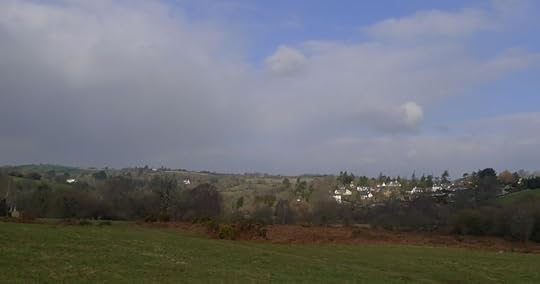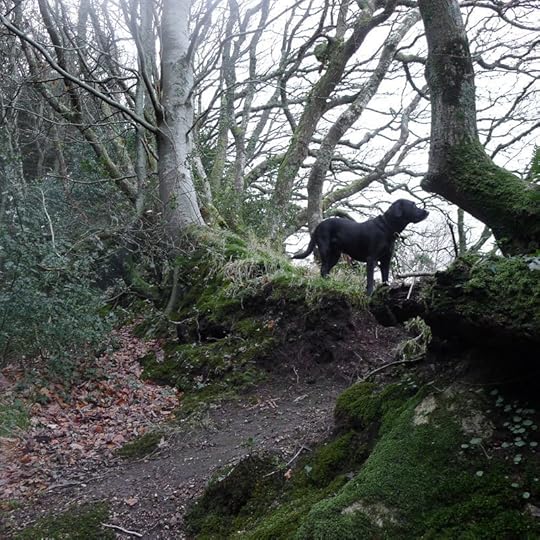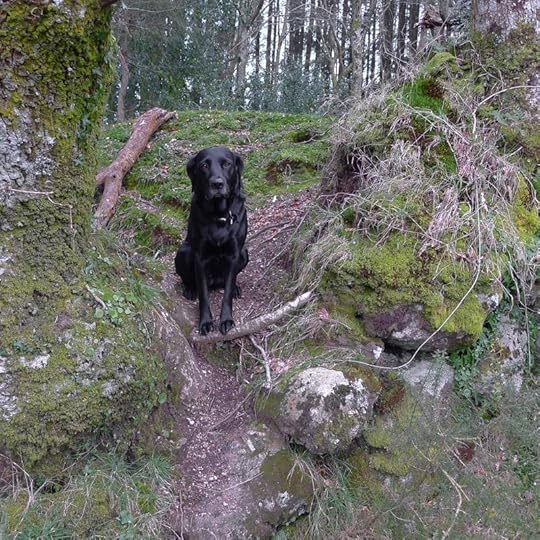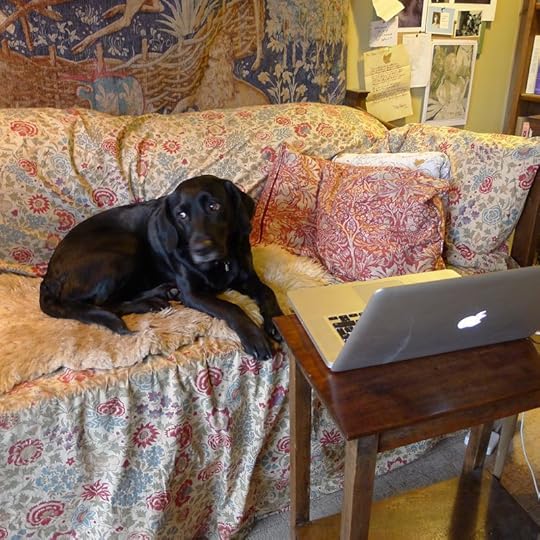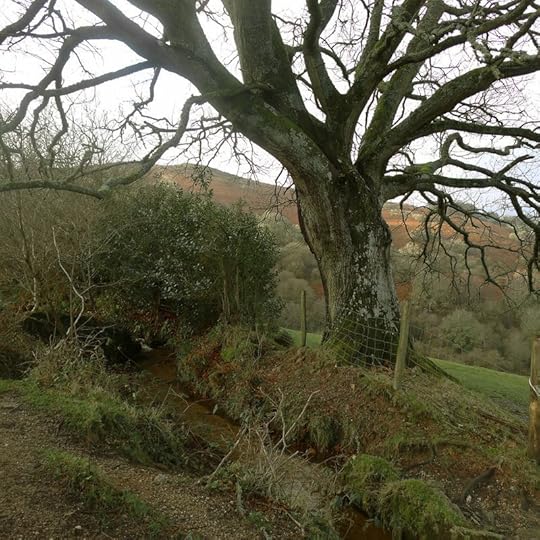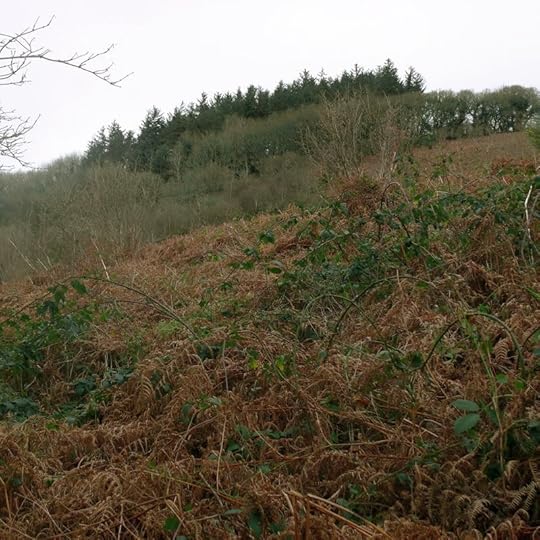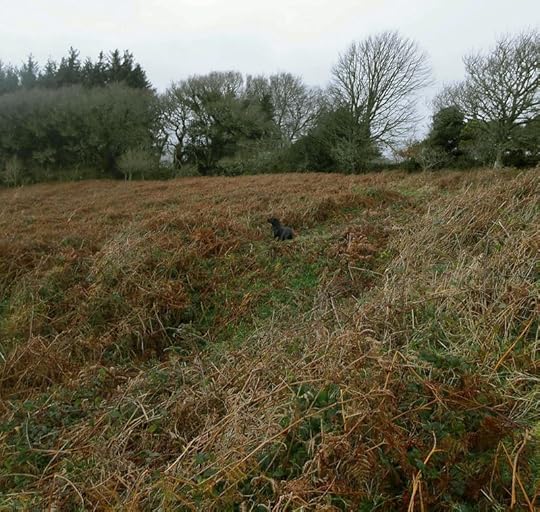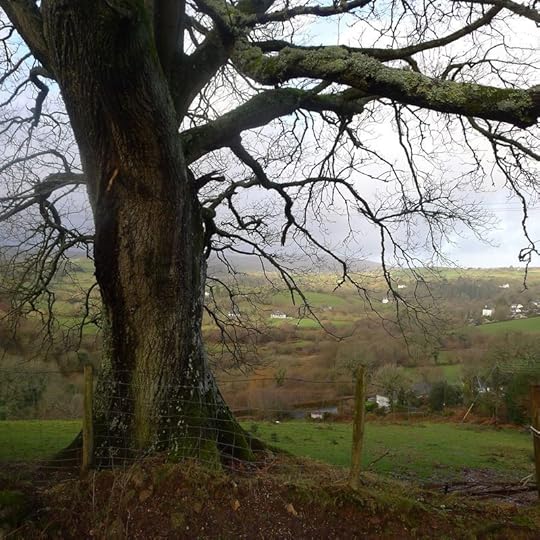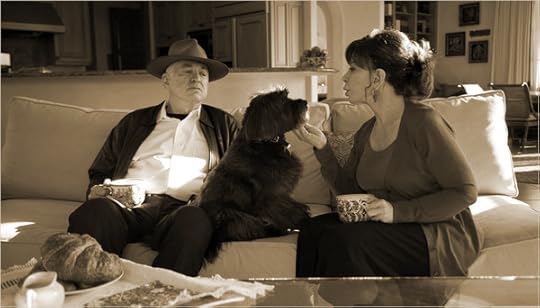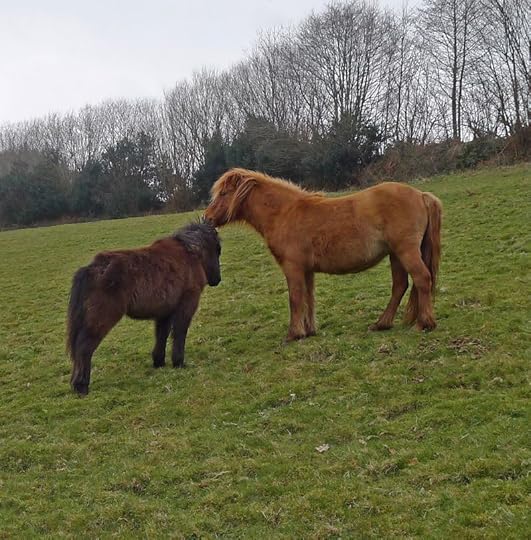Terri Windling's Blog, page 197
March 7, 2013
The moment of surprise
"There is a point beyond which training and practice cannot take you.
Zeami, the 14th century Noh drama playwright and director who was also a
Zen priest, spoke of this moment as 'surprise.' This is the surprise of
discovering oneself needing no self, one with the work, moving in
disciplined ease and grace. One knows what it is to be a spinning ball
of clay, a curl of pure while wood off the edge of a chisel.... At this
point one can be free, with the work and from the work." - Gary Snyder
"I believe it was John Cage who once told me, 'When you start working,
everybody is in your studio -- the past, your friends, enemies, the art
world, and above all, your own ideas -- all are there. But as you continue
painting, they start leaving, one by one, and you are left completely
alone. Then, if you're lucky, even you leave.'" - Philip Guston
"When the work takes over, then the artist is enabled to get out of the
way, not to interfere. When the work takes over, then the artist
listens.”- Madeleine L'Engle
“It is not your business to determine how good [your work] is;
nor how valuable it is; nor how it compares with other expressions.
It is your business to keep it yours, clearly and directly, to keep
the channel open.” - Martha Graham
"I like to use the word "isumatug.'
It’s of eastern Arctic Eskimo dialect and refers to the
storyteller, meaning ‘the person who creates the atmosphere in
which wisdom reveals itself.’ I think that’s the writer’s job.
It’s not to be brilliant, or to be the person who always knows,
but…to be the one who recognizes the patterns that remind us of
our obligations and our dreams.” - Barry Lopez
The stunning light sculptures here are by the Norwegian installation artist Rune Guneriussen, who finds magic and inspiration in his native landscape.
"As an artist," he says, "I believe strongly that art itself should be questioning
and bewildering as opposed to patronising and restricting. As opposed to
the current fashion I do not want to dictate a way to the understanding
of my art, but rather indicate a path to understanding a story."
March 6, 2013
The things that stop us in our tracks
"It is a silver morning like any other," says poet Mary Oliver (in her essay "Power and Time"). "I am at my desk. Then the phone rings, or someone raps at the door. I am deep in the machinery of my wits. Reluctantly I rise, I answer the phone or open the door. And the thought which I had in hand, or almost in hand, is gone.
"Creative work needs solitude. It needs concentration, without interruptions. It needs the whole sky to fly in, and no eye watching until it comes to that certainty which it aspires to, but does not necessarily have at once. Privacy, then. A place apart -- to pace, to chew pencils, to scribble and erase and scribble again.
"But just as often, if not more often, the interruption comes not from another but from the self itself, or some other self within the self, that whistles and pounds upon the door panels and tosses itself, splashing, into the pond of meditation. And what does it have to say? That you must phone the dentist, that you are out of mustard, that your uncle Stanley's birthday is two weeks hence. You react, of course. Then you return to work, only to find that the imps of idea have fled back into the mist."
"One must work with the creative powers," Oliver continues later in the essay, "for not to work with is to work against; in art as in spiritual life there is no neutral place. Especially at the beginning, there is a need of discipline as well as solitude and concentration. A writing schedule is a good suggestion to make to young writers, for example. Also, it is enough to tell them. Would one tell them so soon the whole truth, that one must be ready at all hours, and always, that the ideas in their shimmering forms, in spite of all our conscious discipline, will come when they will, and on the swift upheaval of their wings -- disorderly; reckless; as unmanageable, sometimes, as passion."
"It is six a.m., and I am working," Oliver concludes. "I am absent-minded, reckless, heedless of social obligations, etc. It is as it must be. The tire goes flat, the tooth falls out, there will be a hundred meals without mustard. The poem gets written. I have wrestled with the angel and I am stained with light and I have no shame. Neither do I have guilt. My responsibility is not to the ordinary or the timely. It does not include mustard, or teeth. It does not extend to the lost button, or the beans in the pot. My loyalty is to the inner vision, whenever and howsoever it may arrive. If I have a meeting with you at three o'clock, rejoice if I am late. Rejoice even more if I do not arrive at all.
"There is no other way work of artistic worth can be done. And the
occasional success, to the striver, is worth everything. The most
regretful people on earth are those who felt the call to creative work,
who felt their own creative power restive and uprising, and gave to it
neither power nor time."
I recommend reading the essay in full in Blue Pastures by Mary Oliver (Harcourt Brace, 1995) -- and all her wonderful other books too. Photos: Tilly on the village Commons, and the village nestled in the surrounding hills.
March 5, 2013
Guarding the egg
“Be ruthless about protecting writing
days, i.e., do not cave in to endless requests to have 'essential'
and 'long overdue' meetings on those days. The funny thing
is that, although writing has been my actual job for several years
now, I still seem to have to fight for time in which to do it. Some
people do not seem to grasp that I still have to sit down in peace
and write the books, apparently believing that they pop up like
mushrooms without my connivance. I must therefore guard the time
allotted to writing as a Hungarian Horntail guards its firstborn
egg.” - J.K. Rowling
This applies, I think, not only to writing, but to all creative work, and to working from home in general.
Your thoughts?
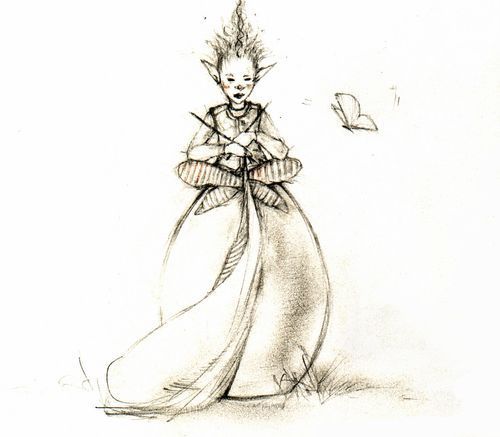 Images: The illustrations at the top of this post are "Working from Home" and "Dragon Pest" by the London-based illustrator & animator Carmen Bromfield-Mason, whose work I love. (The first drawing is a self portrait, with the artist's cats Kimberly and Titan.) The little sketch at the bottom is by me.
Images: The illustrations at the top of this post are "Working from Home" and "Dragon Pest" by the London-based illustrator & animator Carmen Bromfield-Mason, whose work I love. (The first drawing is a self portrait, with the artist's cats Kimberly and Titan.) The little sketch at the bottom is by me.
The art of asking
Just in case you missed it, here is the recent TED talk by musician, composer, and performance artist Amanda Palmer (who is also the wife of my old friend Neil Gaiman), discussing "The Art of Asking," crowd-sourcing, and the relationship between artists and their fans. It's a passionate, smart, inspiring presentation.
Crowd-sourcing, of course, is one of the means by which artists in many fields are now bypassing the gatekeepers who have traditionally controlled arts funding (publishers, music companies, grant-giving organizations, etc.). It's been fascinating to see the different ways that people are using platforms like Kickstarter, Indiegogo, GigFunder, etc., and intriguing to see which crowd-funded projects work and which don't, and why.
And to practice the "art of asking" myself:
I'd like to recommend a Kickstarter
campaign by my friend and Devon neighbor Ione Rucquoi,
an amazing artist who often explores women's issues, and who is raising funds to mount a gorgeous,
provocative, important show called Sanctae.
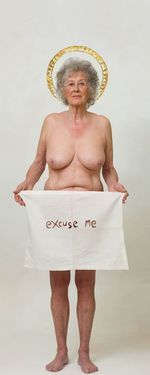 Sanctae: Portraits of Secular Saints is a photographic installation comprising 21
Sanctae: Portraits of Secular Saints is a photographic installation comprising 21
larger than life size (8ft x 3ft) images of female nudes, using friends, neighbors, and other 'real' women as models. "Resonant with
historical and religious symbols and signs," says Ione, "these larger than life idols
'make saints of the ordinary' by exploring the intense emotions,
expectations and sacrifices inherent in the female body's potential to
give life, creating a space of challenging reflections and revelations
about issues of contemporary womanhood."
As one of the women who posed for the project said: "Every
image says so much about the truth of real women's bodies. We all have scars
and oddities. Not one photo shows a perfect body. And yet
everywhere in today's society, women are bombarded with unreal images of
idealized female sexuality - photographs of models with every imperfection
eliminated. Ione's
work is important because it reminds all women that the images we see in the
media are not real. The 'Sanctae' images capture great dignity in the women. As a
participant, it took a lot of courage to take part, but I did so because of my
faith in the importance of this project."
Please watch the informative (and moving) video below to learn more.
Ione has been working on Sanctae for nearly three
years. Despite the success of her previous exhibitions, it has been difficult to find venues for this one because of the
scale of the photographs, and the subject matter. She now has a show scheduled at the Royal West of England Academy in Bristol (Jan 2014), and has obtained Arts Council funding of £17,000. -- but still needs to raise another £6000. to cover the show's costs. She's searching for additional venues, and hoping to get the project over to to Europe with help
from her gallery in Berlin and eventually to the U.S. as well.
Can you help? Please visit the Santae Kickstarter page to learn more, contribute (no amount is too small), view examples of Ione's past work, and to contact the artist if you can help the project in any way. Also, if you can boost the signal for Ione's Kickstarter, that would be a help too.
March 4, 2013
On beginnings
"The advice I like to give young artists," says painter Chuck Close, "or really anybody who'll listen to me, is not to wait around for inspiration. Inspiration is for amateurs; the rest of us just show up and get to work. If you wait around for the clouds to part and a bolt of lightning to strike you in the brain, you are not going to make an awful lot of work. All the best ideas come out of the process; they come out of the work itself. Things occur to you. If you're sitting around trying to dream up a great art idea, you can sit there a long time before anything happens. But if you just get to work, something will occur to you and something else will occur to you and something else that you reject will push you in another direction. Inspiration is absolutely unnecessary and somehow deceptive. You feel like you need this great idea before you can get down to work, and I find that's almost never the case.”
Likewise, novelist Ann Patchett reminds us that in order to write we need to cross the line between thinking about creating and getting down to work. "The journey from the head to the hand is perilous and lined with
bodies," she warns. "It is the road on which nearly everyone who wants to write—and
many of the people who do write—get lost.”

Sometimes we put off the moment of actually beginning, getting stuck
in the dreaming and planning stage instead -- afraid to start, afraid to
commit, afraid to go where the creative process wants to take us. Yet
despite fear and doubt, wrote Rollo May (in The Courage to Create), we must make the leap, plunge in, begin. “The relationship between commitment and doubt is by no means an
antagonistic one," he points out. "Commitment is healthiest when it is not without doubt,
but in spite of doubt.”
And as YA writer Tehereh Mafi says, rather wisely, "The words get easier the moment you stop fearing them."
Beginnings are rarely tidy and controlled...nor are they particularly meant to be.
"For me," says novelist Ramona Ausubel, "the first draft is really just a big mud-rolling, dust-kicking,
mess-making time in which my only job is to find the story’s heartbeat.
I allow myself to invent characters without warning, drop them if they
prove to be uninteresting, change the setting in the middle, experiment
with point of view, etc. I figure that the body will grow up around the
heart, that it’s always possible to bring all the various elements up
and down, sculpt and polish, as long as I’ve got something that matters
to me. The second draft (and the 3rd through 20th, Lord help me)
involves getting out the tool belt and thinking like a carpenter. But
the first draft is all dirt and water and seeds and, hopefully, a little
magic. Of course, this method means that my first draft is almost
unreadable. Maybe someday I’ll invent a way of making a slightly
cleaner mess, but until then, I try to enjoy the muck." *
British novelist Zadie Smith tells young writers: "Don't romanticise your 'vocation.' You can either write good sentences
or you can't. There is no 'writer's lifestyle.' All that matters is what
you leave on the page."
So get it down, those messy first drafts and rough initial sketches, get it down, don't judge, don't polish, don't freeze, don't get stuck endlessly rewriting the first clutch of pages over and over, never progressing any further (a habit I'm all too prone to myself) -- you can edit, fix, fill out, perfect, and pretty it all up later.
"Don't get it right," said the great James Thurber, "just get it written."
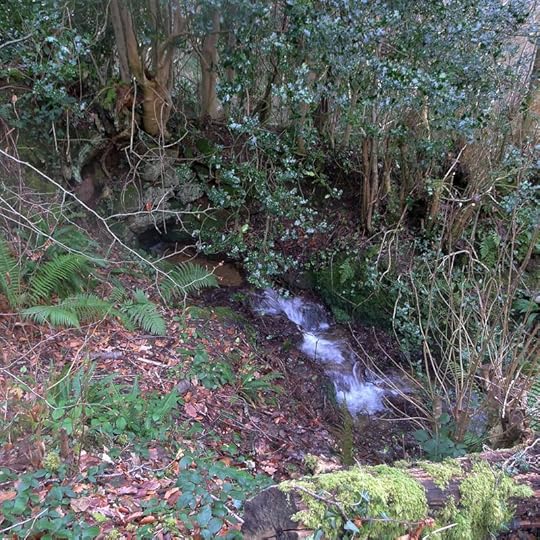
Although we've been speaking specifically of painting and writing, the
crucial moment of "beginning" is important in all forms of creativity -- and each of us is an artist, a "maker," is
some aspect of our lives. We make homes and gardens, classrooms and sanctuaries, families and communities; we create meals and letters and blogs and adventures lodged in our children's memories; and we all have things we want and plan to do, someday...and know we ought to just begin.
"Until one is committed," said the German Romantic poet Johann von Goethe, "there is hesitancy, the chance to draw back, always ineffectiveness. Concerning all acts of initiative and creation, there is one
elementary truth that ignorance of which kills countless ideas and
splendid plans: that the moment one definitely commits oneself, then
Providence moves too. All sorts of things occur to help one that would
never otherwise have occurred. A whole stream of events issues from the
decision, raising in one's favor all manner of unforeseen incidents and
meetings and material assistance, which no man could have dreamed would
have come his way. Whatever you can do, or dream you can do, begin it.
Boldness has genius, power, and magic in it. Begin it now.”
* The Ausubel quote comes from "Novelists on First Drafts," which I recommend reading in full.
March 3, 2013
Tunes for a Monday Morning
Today's theme: inspiration and collaboration.
Above: "Inspiration" from 1 Giant Leap, the wonderful music/film/spoken-word project by created the UK musicians Jamie Catto (of Faithless) and Duncan Bridgeman. This intrepid pair traveled all around the world bringing musicians both famous and obscure into a pan-cultural musical collaboration, interspersed with the words of writers, philosphers, spiritual leaders and others. The results are gathered on two albums and DVDs: 1 Giant Leap and What About Me? The stirring video above, featuring African, Indian, Native American and other musicians, comes from the second DVD.
Below: "Ascending Bird" from The Silk Road Project (performed in New York City). The Silk Road Project was created by the great American cellist Yo-Yo Ma to promote collaboration among global musicians and "the study of the ebb and flow
of ideas among different cultures along the Silk Road." This piece is an arrangement of an old Persian folk song recounding the myth of a bird attempting to fly to the sun. (After failing twice, on the third attempt the bird loses its physical body in the radiant embrace of the sun, a metaphor for spiritual transcendence.) Kamancheh player Kayhan Kalhorhe and the terrific New York quartet Brooklyn Rider are part of the ever-changing Silk Road Ensemble for this performance.
Next, below:
"Caravanserai" by the Canadian singer/songwriter and Celtic music scholar Loreena McKennitt (performed in Alhambra, Spain). This piece comes from Ancient Muse, a concept album which McKennitt describes as “musical travel writing.” For this project she went in search
of the Celts’ easternmost paths and musical roots -- from the plains of Mongolia to the
kingdom of King Midas and the Byzantine Empire; she then created music to be played on instruments drawn from these interlinked cultures. The song here, "Caravanserai," was inspired by rhythms and peoples encountered along the Silk Road.
And last, below:
"My Wild Heart" by Native American flute player R. Carlos Nakai, with hyper-harpist William Eaton and percussionist Will Clipman (performed at the Desert Botanical Garden in Tuscon, Arizona). Nakai, a musician and composer of Navajo/Ute heritage, creates works inspired by indiginous traditions and informed by his western classical training. He often collaborates with artists from other musical cultures -- as he does here, in a piece from the gorgeous album In a Distant Place, on which Nakai, Earon, and Clipman are joined by the Tibetan flute player and composer Nawang Khechog.
March 1, 2013
The Dog's Tale
"Hmmm," says Tilly, "someone left this computer on."
"No one's watching. I could order a bone online."
(The next day) "Where did what bone come from?"
"Oh, that bone! I haven't the foggiest idea...."
February 28, 2013
When things go amiss
"When I'm writing," says Meg Wolitzer, "I ask myself the question that a reader inevitably
asks a writer: why are you telling me this? There has to be an erotic
itch, a sense of book as hot object, the idea that what's contained in
the book is the information you've always needed.
"If the answer to the question 'Why are you telling me this?' doesn't
come quickly, if I'm writing without urgency, that's my first sign that
something's amiss. When novels or stories feel like they're going
nowhere, they've lost their imperative, their reason for being.
"Imperative is the kind of thing we associate with urgent, external
movements -- say, with political causes. I also associate it with art. You
know that something might be righted, whether its a social wrong or
incomplete information. That's what art gives you: a more complete view,
a view of corners you wouldn't otherwise have seen." *
But what if you've lost that imperative, gone astray in the dark forest of the creative process?
"Don't sit down in the middle of the woods," Margaret Atwood advises. "If you're lost in the plot or
blocked, retrace your steps to where you went wrong. Then take the
other road. And/or change the person. Change the tense. Change the
opening page."
"Don't panic," says Sarah Waters. "Midway through writing a novel, I have regularly experienced
moments of bowel-curdling terror, as I contemplate the drivel on the
screen before me and see beyond it, in quick succession, the derisive
reviews, the friends' embarrassment, the failing career, the dwindling
income, the repossessed house, the divorce . . . Working doggedly on
through crises like these, however, has always got me there in the end.
Leaving the desk for a while can help. Talking the problem through can
help me recall what I was trying to achieve before I got stuck. Going
for a long walk almost always gets me thinking about my manuscript in a
slightly new way. And if all else fails, there's prayer. St Francis de
Sales, the patron saint of writers, has often helped me out in a crisis.
If you want to spread your net more widely, you could try appealing to
Calliope, the muse of epic poetry, too."
Hilary Mantel advises: "If you get stuck, get away from your desk. Take a walk, take a bath, go
to sleep, make a pie, draw, listen to music, meditate, exercise;
whatever you do, don't just stick there scowling at the problem. But
don't make telephone calls or go to a party; if you do, other people's
words will pour in where your lost words should be. Open a gap for them,
create a space. Be patient."
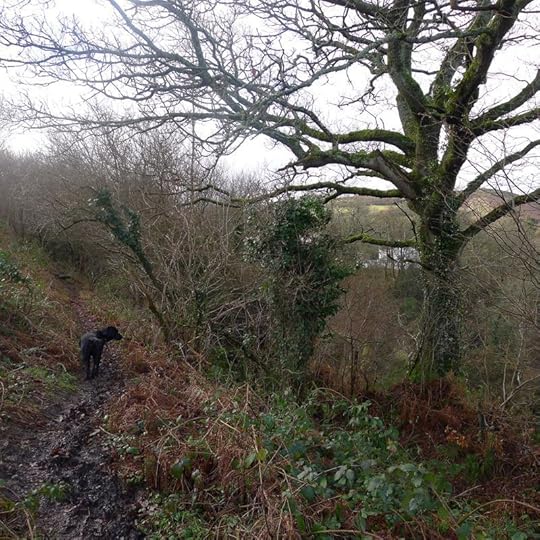
"Never stop when you are stuck," cautions Jeanette Winterson. "You may not be able to solve the problem,
but turn aside and write something else. Do not stop altogether."
Helen Simpson agrees: "The nearest I have to a rule is a Post-it on the wall in front of my desk saying 'Faire et se taire' (Flaubert), which I translate for myself as 'Shut up and get on with it.' "
The last word today comes from Neil Gaiman:
"The main rule of writing," he says, "is that if you do it with enough assurance and
confidence, you're allowed to do whatever you like. (That may be a rule
for life as well as for writing. But it's definitely true for writing.)
So write your story as it needs to be written. Write it honestly, and
tell it as best you can. I'm not sure that there are any other rules.
Not ones that matter."
* The first quote comes from Why We Write, edited by Meredith Maran (Plume/Penguin, 2013), published in aid of the 826 National youth literacy program. Please consider ordering a copy to support this worthy cause.
February 27, 2013
Preparing for the muse
"I start all my books on January 8th," says Isabel Allende. "Can you imagine January 7th? It's hell.
"Every year on January 7th, I prepare my physical space. I clean up everything from my other books. I just leave my dictionaries, and my first editions, and my research materials for the new one. And then on January 8th I walk seventeen steps from the kitchen to the little pool house that is my office. It's like a journey to another world. It's winter, it's raining usually. I go with my umbrella and the dog following me. From those seventeen steps on, I am in another world and I am another person.
"I go there scared. And excited. And disappointed -- because I have a
sort of idea that isn't really an idea. The first two, three, four weeks
are wasted. I just show up in front of the computer. Show up, show up,
show up, and after a while the muse shows up too. If she doesn't show up
invited, eventually she just shows up." *
"I
write eight to ten hours a day," Allende says, "until I have a first draft, then I can
relax a little. I am very disciplined. I write in silence and solitude. I
light a candle to call inspiration and the muses, and I surround myself
with pictures of the people I love, dead and alive.”
"One of the hardest things to do with a novel," says Philip Pullman, "is to stop writing it
for a while, do something else, fulfill this engagement or that
commitment or whatever, and pick it up exactly where you left it and
carry on as if nothing had happened. You will have changed; the story
will have drifted off course, like a ship when the engines stop and
there’s no anchor to keep it in place; when you get back on board, you
have to warm the engines up, start the great bulk of the ship moving
through the water again, work out your position, check the compass
bearing, steer carefully to bring it back on track … all that energy
wasted on doing something that wouldn’t have been necessary at all if
you’d just kept going."
"I don't know where my ideas come from," Pullman says, "but I know where they come to. They come to my desk, and if I'm not there, they go away again."
* The first quote is taken from Why We Write, edited by Meredith Maran (Plume/Penguin, 2013), published in aid of the 826 National youth literacy program. Please consider ordering a copy to support this worthy cause.
Sanskrit read to a pony
Two last pony pictures for you: the cheeky spotted pony, who was as interested in me as I was interested in her (and just as good as Tilly at posing for the camera), and the sweet, shaggy pair who were really only interested in each other.
In the West Country lore of Devon and Cornwall, the land is home to a variety of fairies called piskies, running the gamut from benevolent house piskies to shy, isolated moor-and-bogland-dwelling creatures, to dangerous beings who plagued the region's tin miners of old and still delight in leading travellers astray. Some piskies are said to be shape-shifters -- most commonly turning into hares and hedgehogs, but I've also run across tales of "colt piskies" who take the shape of young wild ponies.
Colt piskies are trickster figures, fond of playing practical jokes on their domesticated equine cousins, but not so deeply dangerous as other Celtic horse fairies (Scottish kelpies, for example, or Irish phookas). They are mischievous creatures, of whom it's best to be wary, but capable of kindness towards humans too -- and they seem to have it made it their special mission to protect apple orchards from thieves and harm.
"Life is like Sanskrit read to a pony," the musician Lou Reed
once said. Here on Dartmoor, I wouldn't put it past our local fairy
horses to understand Sanskrit perfectly, to love being read to, sung to,
and told stories -- for they are, in myth and folklore, a magical part
of the Great Story themselves.
Terri Windling's Blog
- Terri Windling's profile
- 707 followers









